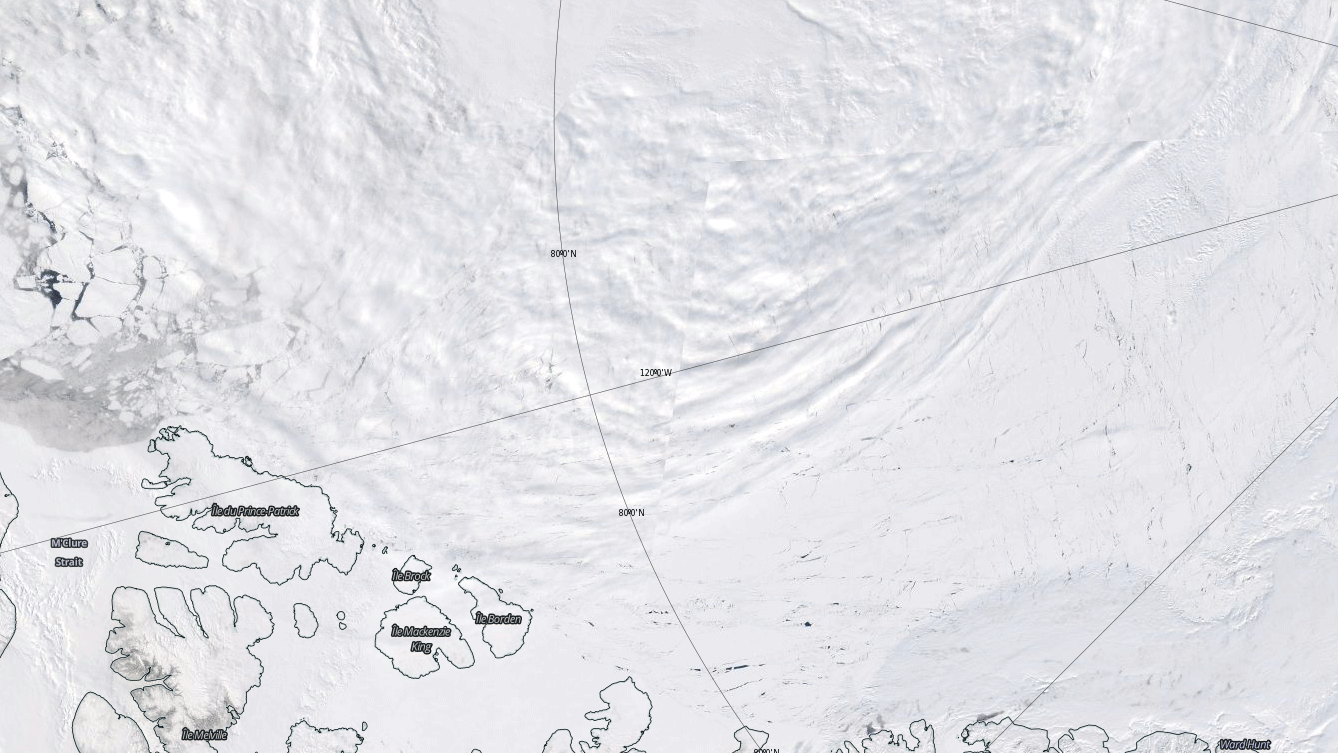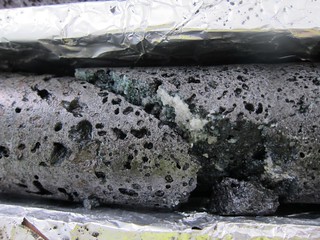May sets troubling new record low for Arctic sea ice
Meteorologist/Science Writer
Thursday, June 9, 2016, 9:28 PM - Troubling news from the Arctic, as sea ice extent for the entire month of May sets a new record low, and turning carbon dioxide into rock. It's What's Up In Climate Change!
Will 2016 beat out 2012 for Sea Ice low?
After setting a new record low for maximum winter sea ice extent back in March, and setting new records for low ice extent through most of April, conditions in the Arctic deteriorated further through the month of May.
According to the US National Snow and Ice Data Center:
May 2016 set a new record low for the month for the period of satellite observations, at 12.0 million square kilometers (4.63 million square miles), following on previous record lows this year in January, February, and April. May’s average ice extent is 580,000 square kilometers (224,000 square miles) below the previous record low for the month set in 2004, and 1.39 million square kilometers (537,000 square miles) below the 1981 to 2010 long-term average.
Regular satellite observations for Arctic sea ice go back to 1979.

Arctic Sea Ice extent, up to June 8, 2016. Credit: NSIDC
As the graph shows, except for a brief period from April 15-19, Arctic sea ice has been at record low levels since April 1.
Although problems with satellite data around the beginning of April prompted the NSIDC to switch over to an alternate source - from the Defense Meteorological Satellite Program (DMSP) F17 satellite to the DMSP F18 satellite - and thus the April and May numbers are considered preliminary, the same trends in the sea ice extent were recorded by both the Danish Meteorological Institute (DMI) and the Japan Aerospace Exploration Agency (JAXA) for that time period.
|
|
|
What's behind this record low for the Arctic? From the NSIDC's latest update, it was due to an "unusually early retreat of sea ice in the Beaufort Sea," as well as "pulses of warm air entering the Arctic from eastern Siberia and northernmost Europe."

May global temperature anomalies, showing the widespread heat across the Arctic. Credit: WxBell
With a slight uptick in the ice extent in the early days of June, it is still possible that 2016 could avoid beating out 2012, which is currently the record-holder for lowest summer Arctic sea ice extent.
The days ahead will certainly be ones to watch, to see if this uptick holds. The large cracks that have spread from the Beaufort Sea, however, even through the multi-year ice closer to the North Pole (visible in the video above), as well as the long fissure that has opened up in early June, stretching nearly 800 kilometres from Prince Patrick Island to Axel Heiberg Island in Canada's north (seen in the animation below), does not bode well for that region of sea ice.

The Arctic Ocean, between the Beaufort Sea and the North Pole, along Canada's Arctic, May 31 to June 8, 2016. Credti: NASA Aqua/MODIS
The situation around the Antarctic is not much better, based on the satellite records.
Sea ice extent in the southern ocean was below average through much of May, and at its lowest levels since 2002.

Antarctic sea ice extent, up to June 8, 2016. Credit: NSIDC
Based on records, only nine years - seven of which were in the 1980s - saw lower sea ice extents through the latter half of May and into the beginning of June.
In contrast to Arctic sea ice extents, the extent of ice surrounding Antarctica has been above average for years now, mainly as a consequence of cold, fresh water pouring into the ocean's top layer from melting glaciers on land, but also due to strong winds pushing the ice further away from the continent. Despite this, the trend seen in the Antarctic lately is not expected to last. While the southern ocean has been sheltered from effects of global warming more than any other place in the world, this may be a sign that its influence is starting to take its toll, even in that remote part of the globe.
Turning carbon dioxide into rock
We have a serious problem brewing in our atmosphere, and it's only getting worse as emissions of carbon dioxide and other greenhouse gases continues to rise.
One solution to this problem could be to extract the troublesome CO2 from the air, and store it. Without the excess CO2 in the atmosphere to trap heat, we could see a reasonable limit put on global warming and climate change. However, the problem with Carbon Capture and Storage (CCS) techniques has always been where to put the carbon after you've captured it. After all, if your storage site springs a leak, the problem starts all over again.
|
|
A team of researchers, working as part of the CarbFix project, may have found a solution, though. Rather than simply pumping the gas into a storage facility, they have found a way to permanently turn the carbon into rock.
By dissolving the carbon dioxide into water, and then pumping that water down and through the volcanic basalt bedrock of Iceland, the researchers found that the carbon reacted with the rock, producing carbonate minerals.
"Carbonate minerals do not leak out of the ground, thus our newly developed method results in permanent and environmentally friendly storage of CO2 emissions," study lead author Dr. Juerg Matter, from the University of Southampton and the Lamont-Doherty Earth Observatory at Columbia University, said in a statement. "On the other hand, basalt is one of the most common rock type on Earth, potentially providing one of the largest CO2 storage capacity."
While this kind of process was thought to take a very long time, up to thousands of years, the team discovered it happening on a much shorter time scale during their tests.
"Our results show that between 95 and 98 per cent of the injected CO2 was mineralized over the period of less than two years," Matter said, "which is amazingly fast."
According to the University of Southampton:
To monitor what was happening underground, the team also injected ‘tracers’, chemical compounds that literally trace the transport path and reactivity of the CO2. There were eight monitoring wells at the study site, where they could test how the chemical composition of the water had changed. The researchers discovered that by the time the groundwater had migrated to the monitoring wells, the concentration of the tracers -- and therefore the CO2 -- had diminished, indicating that mineralization had occurred.
Matter and his team acknowledge that the scale of their study is quite small. Even now, according to Matter, a more upscale project at Reykjavik Energy's Hellisheidi geothermal power plant is storing up to 5,000 tonnes of carbon dioxide as carbonate minerals. This is compared to the over 35 gigatonnes of CO2 emitted into the atmosphere in 2014.
This new technique is promising, however, especially if it proves effective on a larger scale.
"Storing CO2 as carbonate minerals significantly enhances storage security," said Matter "which should improve public acceptance of Carbon Capture and Storage as a climate change mitigation technology."
Sources: NSIDC | University of Southampton | CarbFix | Global Carbon Atlas






